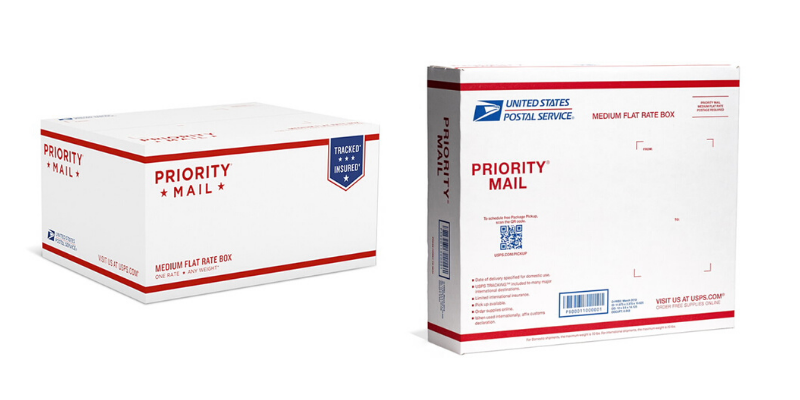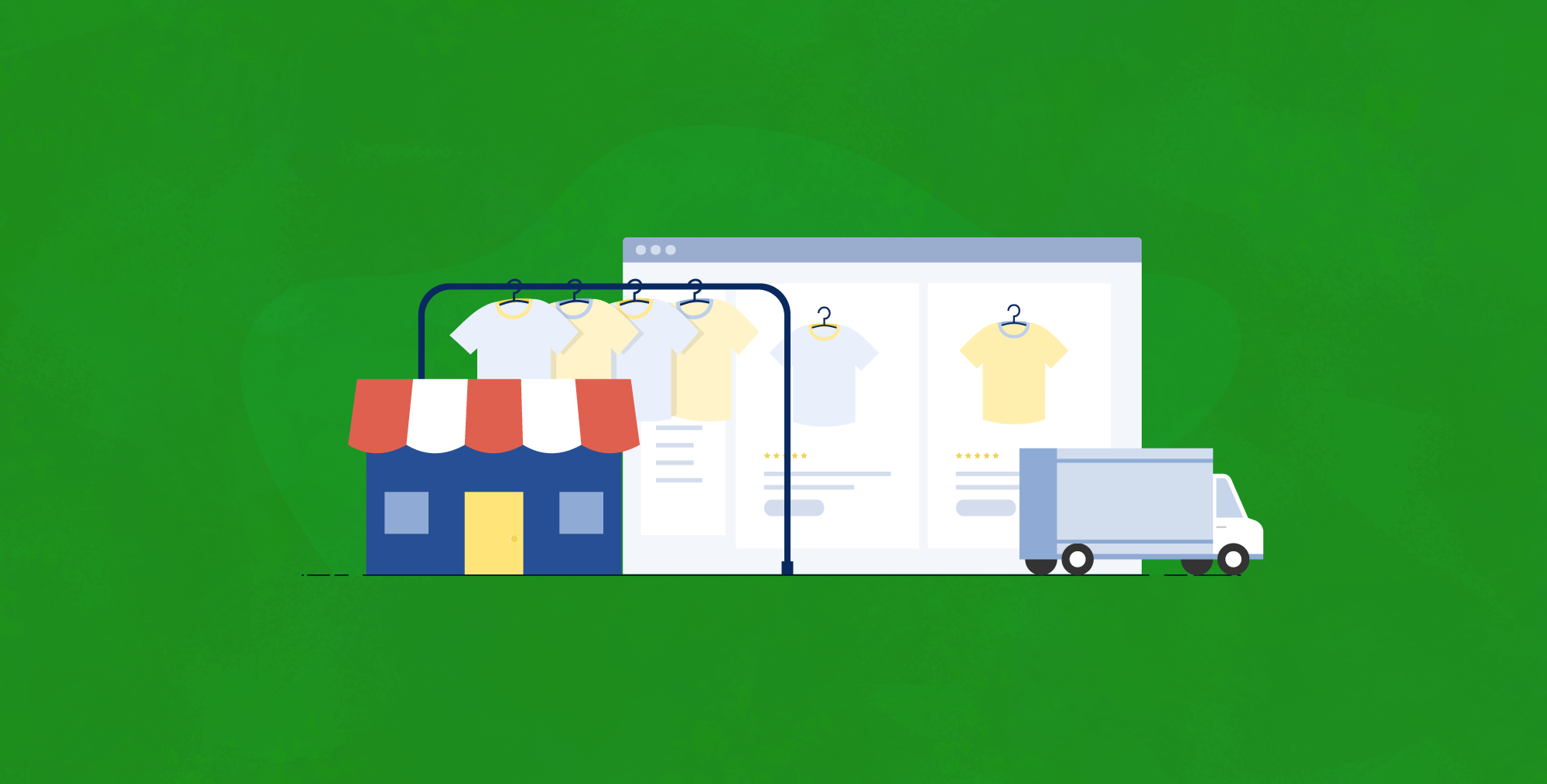The COVID-19 pandemic has accelerated the pace at which customers make the move to digital shopping. E-commerce is expected to jump to 38% of all holiday retail sales, while brick-and-mortar sales are expected to decline year-over-year. 87% of people say they will shop online more due to COVID, with 63% of them saying they plan to do ALL of their holiday shopping online. It’s clear that brick-and-mortar stores need to adopt a bricks to clicks transition strategy. We’re here to help!
Time to adopt shipping
The biggest change moving from bricks to clicks is shipping products to customers. If you’ve only ever relied on foot traffic and in-person interactions, shipping can be quite daunting to adapt. Which carrier do you use? Do the boxes you use matter? Is there a way to pay less for shipping? Do you have to wait in line every day? Is there a faster way to do all of this?
First, you’re not alone in asking all of the questions. We’ll answer each one of these here for you.
Prefer to dive into our in-depth “Bricks to Clicks” guide? Download it for free here!
Which carrier do you use?
The best approach is a multicarrier approach. While it may seem easier to rely on a single carrier’s services, comparing rates between carriers is how you avoid overpaying for shipping. We’ll talk more about that in a moment.

The downside is that it can be very time consuming to jump browser tab to browser tab, entering information in and comparing rates. Using a platform like ShippingEasy lets you compare rates side-by-side in seconds for multiple carriers and their services.
Do the boxes you use matter?
Absolutely. Many of the carriers offer free supplies if you order off their website, and they’ll even deliver them to your door. As long as having branded boxes isn’t important to you, this can be another cost-saving measure.
Beyond that, there are different options based on the boxes you use. For example, with USPS you could use their most popular service Priority Mail. Within Priority Mail, there are Flat Rate boxes that allow you to pay the same amount regardless of destination or weight (up to a threshold). USPS also offers Regional Rate boxes, which are cheaper than Flat Rate in many instances where you aren’t shipping products far.

There are also instances using ShippingEasy’s discounted UPS rates where UPS Ground may be cheaper than Priority Mail based on weight and destination. This is why it’s crucial to compare rates every time you ship.
Another thing to note is something called dimensional weight. UPS and FedEx apply this to all packages, while USPS applies it to packages larger than one cubic foot. Dimensional weight uses an equation that creates a “weight” based on how much room your package takes up on a truck, as opposed to the physical weight of the product. So if you ship large, lightweight items, you’ll want to find packaging that minimizes excess space to avoid potentially paying more to ship these items, or understand that you’ll have to absorb that additional cost. We wrote a full breakdown of dimensional weight here.
Is there a way to pay less for shipping?
Aside from comparing services and carriers, there are other ways to save on shipping costs. One of those is to use a shipping platform like ShippingEasy that offers discounted shipping rates you wouldn’t otherwise have access to. We offer what are called USPS Commercial Rates and exclusive Flat Rate Green shipping rates on packages that are smaller and heavier. We also offer Discounted UPS rates and can help you avoid certain surcharges. For example, UPS will not apply 2020 Peak Season Surcharges to merchants that opened their account in ShippingEasy.
Do I have to wait in line every day?
Absolutely not. You don’t have the time for that, particularly during a busy holiday season. You can schedule pickups from the carriers to take the packages away from your store and get them into the mail stream. USPS pickups are free and will typically occur on your normal carrier’s route. UPS pickups come with a fee, but through ShippingEasy only cost $3.80 pickup fee. Note there may be limits on the number of packages in a single pickup.
Another way to save time when scheduling USPS pickups is to create what is called a SCAN form. Tools like ShippingEasy make this easy and simple to create. A SCAN form takes all the barcodes from all of your packages and embeds them in a single barcode. All your carrier has to do is scan that single barcode and all of your packages will be shown as picked up and moving into the mailstream.

Is there a faster way to do this?
We are a little biased, but ShippingEasy can cut literally hours from your day processing shipments. Through simple automation and an easy-to-use platform, many of the decisions above can be made for you. Our platform even remembers how you shipped an order previously and recommends that carrier and service again.
For example, let’s say you sell custom-made pottery. You probably use a slightly larger package to ensure you can properly pad the item, and might even add in some shipping insurance just to be safe. Depending on how far the package is going you may have chosen Priority Mail or UPS Ground. ShippingEasy will remember all these settings so you don’t have to, and so you don’t have to take the time to enter all that information in again!
Should you offer free shipping?
Over the past few years, Amazon has really changed customer expectations around shipping. Free and fast shipping has become a standard, but people are also easing these expectations due to COVID and wanting to see local businesses survive. Below are a few different options you could try to mitigate the hit to your bottom line from shipping.
- Flat Rate Shipping: charge a single amount for shipping, regardless of spend or number of items purchased. An additional benefit of this type of shipping is that people may be more likely to add more items to their cart to justify paying for shipping. The downside is that you may lose single-item sales if people don’t feel it’s worth paying to ship that item, and may research elsewhere.
- Free Shipping Threshold: this is a very popular option, but does require a bit of adjustment. Customers pay for shipping unless their order meets a certain threshold, then shipping is free. Again, this can encourage people to add more items to their cart to get free shipping. The threshold you set will be dependent on the price of your products and will ideally be a happy medium between your needs to cover shipping and your customers’ willingness to purchase enough to meet the threshold. It may require some nuance but can be a compromise.
- Outright Free Shipping: this will obviously be the most straightforward, but can be a burden for merchants who sell low-overhead items. This is where it becomes crucial to optimize your shipping options and ensure you’re paying the least amount possible to mitigate effects on your bottom line.
While there is a lot that goes into making the switch from in-person to online commerce, it’s not something you should feel is out of reach.
These points are just one element of our in-depth guide. It’s available as a free download to merchants like you who are trying to ramp up quickly to take part in a vastly more digital holiday shopping season. Click below to get your free copy now!
Rob Zaleski
Latest posts by Rob Zaleski (see all)
- USPS 2023 Shipping Rate Changes - November 16, 2023

